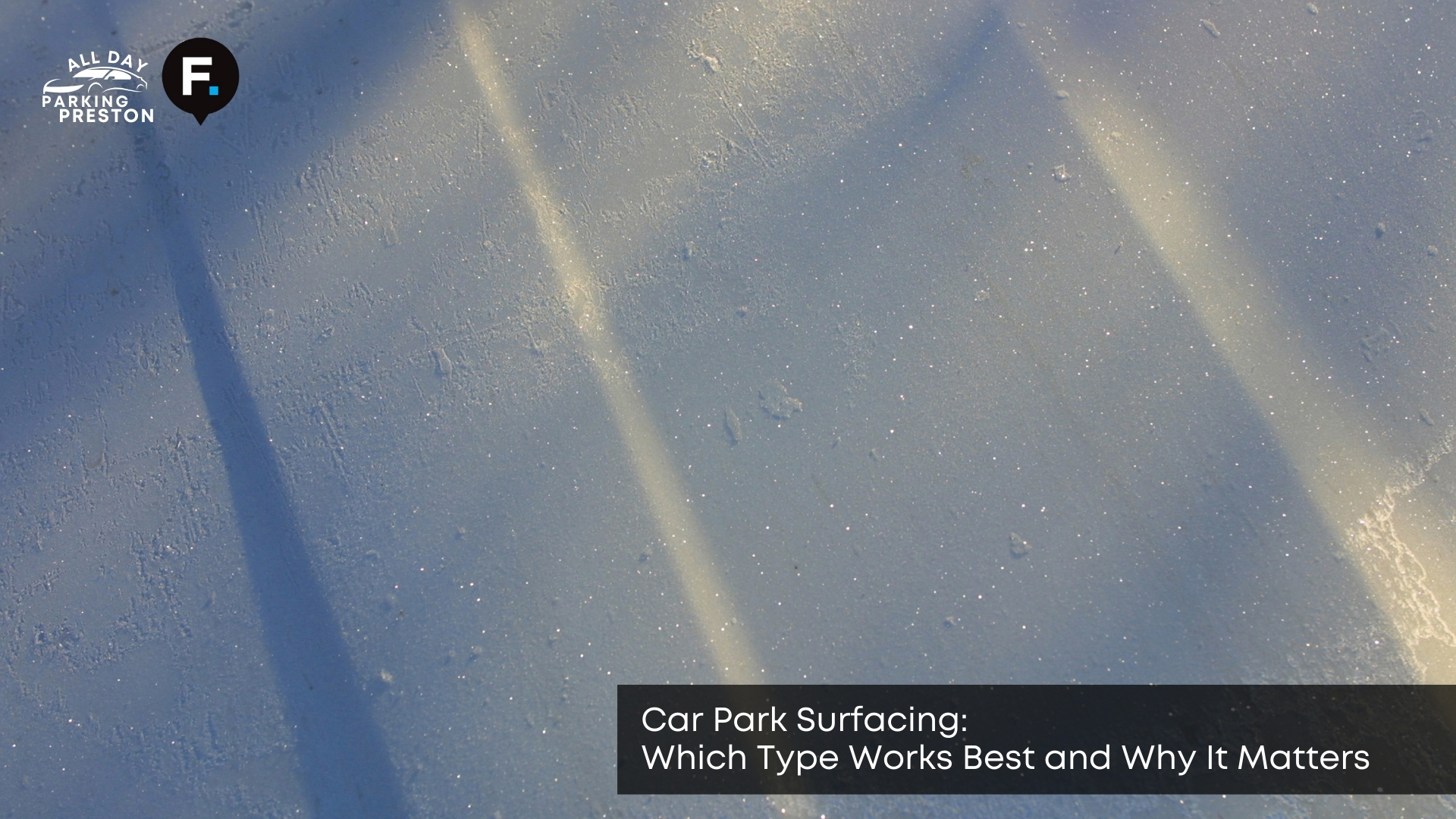Paying for parking may seem simple, but determining how long you can stay after your time has expired is often less clear. Some car parks offer grace periods, while others start counting the moment your time ends. Staying too long, even by a few minutes, could lead to fines. In this article, we outline the rules and key considerations to be aware of, enabling you to avoid unwanted penalties.
What Is Car Park Surfacing and Why Is It So Important?
Car park surfacing is the process of laying a stable, durable material to create a safe and usable area for vehicle parking. It is important because the car park surface must withstand traffic loads, various weather conditions, and meet drainage needs. Poor surfacing can lead to cracks, puddles, and safety risks for drivers and pedestrians. Choosing the right car park surfacing protects your investment and ensures a better parking experience. That’s why picking the right material is the next key step.
What Are the Most Common Surfacing Materials Used in Car Parks?
The most common car park surfacing materials include tarmac, asphalt, concrete, gravel, and block paving. Each type has its strengths, costs, and maintenance needs. Tarmac and asphalt are popular for large surface car park areas due to their durability and speed of installation. Concrete is known for its strength and low upkeep, while gravel is cheaper but less stable. Block paving offers a decorative option with easy access to repairs. For heavy-duty use, the comparison between tarmac and asphalt becomes even more important.
Is Tarmac or Asphalt Better for Heavy Vehicle Use?
Yes, asphalt is generally better for heavy vehicle use because it is more flexible and less likely to crack under pressure. Tarmac is also strong but can become brittle over time. Asphalt allows for slight movement, which is beneficial in areas with high vehicle traffic, such as delivery zones or surface car parks at retail parks. This makes it a good choice for car park resurfacing where durability under load is a priority. That said, smaller spaces may benefit from alternatives like gravel or paving.
How Do Gravel and Block Paving Compare in Cost and Performance?
Gravel is cheaper to install but less durable than block paving, which offers better appearance and performance over time. Car park surfaces made from gravel may require frequent topping up and levelling, whereas block paving remains stable and allows for easy access to underground pipes. Gravel is suitable for low-traffic or temporary areas, while paving suits residential or decorative surface car parks. When comparing the two, it’s also important to consider how each handles water.
Does the Right Surface Help With Drainage and Water Control?
Yes, the right surface helps manage water and improves drainage, especially in areas with frequent rainfall. Permeable car park surface materials, such as porous asphalt or specially designed paving, allow water to pass through, preventing puddles and reducing runoff. Good drainage also protects the base layers of the car park surfacing from erosion. If drainage is ignored, it can lead to surface failure and higher repair costs. That brings us to another key concern—safety.
Can Proper Surfacing Reduce Slip Hazards for Cars and People?
Yes, proper surfacing can reduce slip hazards for both vehicles and pedestrians by providing grip and controlling water. Rough-textured car park materials, such as resin-bound surfaces or grooved concrete, provide added friction underfoot and under the tyres. This helps prevent sliding in wet or icy conditions. A safe car park surface also supports better traffic flow and reduces the chance of accidents. But to keep it working well, resurfacing must be done at the right time.
How Often Should You Resurface or Repair a Car Park?
You should resurface or repair a car park every 10 to 20 years, depending on usage, weather, and the type of car park surfacing materials used. High-traffic surface car parks may need attention sooner, especially if cracks, potholes, or pooling water start to appear. Routine checks and quick repairs can extend the life of the surface. When updating a car park, some also consider greener options.
Are There Special Surface Options for Eco-Friendly Car Parks?
Yes, there are eco-friendly car park surfacing options, such as permeable pavers, recycled rubber, and low-impact resin-bound materials. These products reduce water runoff, utilise recycled content, and lower carbon emissions during installation. Some car park materials even support grass growth for a greener visual appeal. Eco-conscious car park resurfacing also helps secure planning approvals and enhances the public image. If you want to cut costs while doing so, consider this parking VAT trick that helps drivers save more on their parking spend. Still, choosing wisely means knowing what mistakes to avoid.
What Mistakes Should You Avoid When Choosing a Surfacing Type?
Common mistakes include selecting the wrong surface for the traffic level, overlooking drainage, and failing to prepare the base properly. Some projects fail because they utilise decorative options that are not designed for daily use or heavy loads. Others overlook how certain car park surfaces respond to heat, water, or prolonged wear. It’s best to match the surface to your car park’s purpose and environment. For regulated access and usage, Preston parking permits also help maintain control and order in busy areas. When done right, surfacing offers more than just function.
How the Right Car Park Surfacing Improves Safety, Value, and User Experience
The right car park surfacing enhances safety, boosts property value, and creates a better user experience by reducing hazards, improving drainage, and maintaining a professional appearance. Whether for a small surface car park or a large facility, choosing the right car park surfacing materials pays off in reduced upkeep and happier users. At All Day Parking Preston, a well-planned surface is the foundation of any successful parking area. Explore more Preston car park solutions that prioritise quality, safety, and convenience.


Leave a Reply